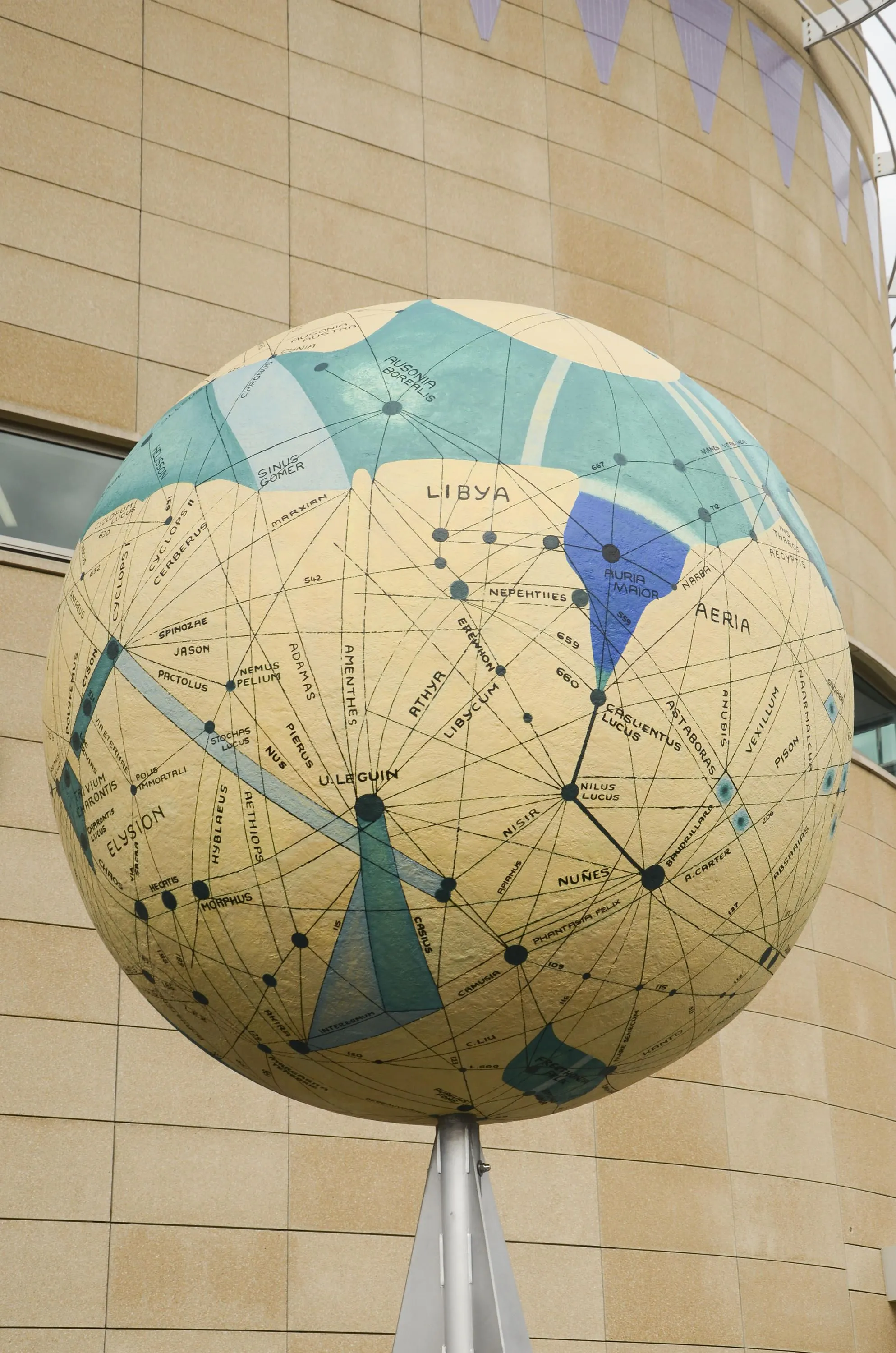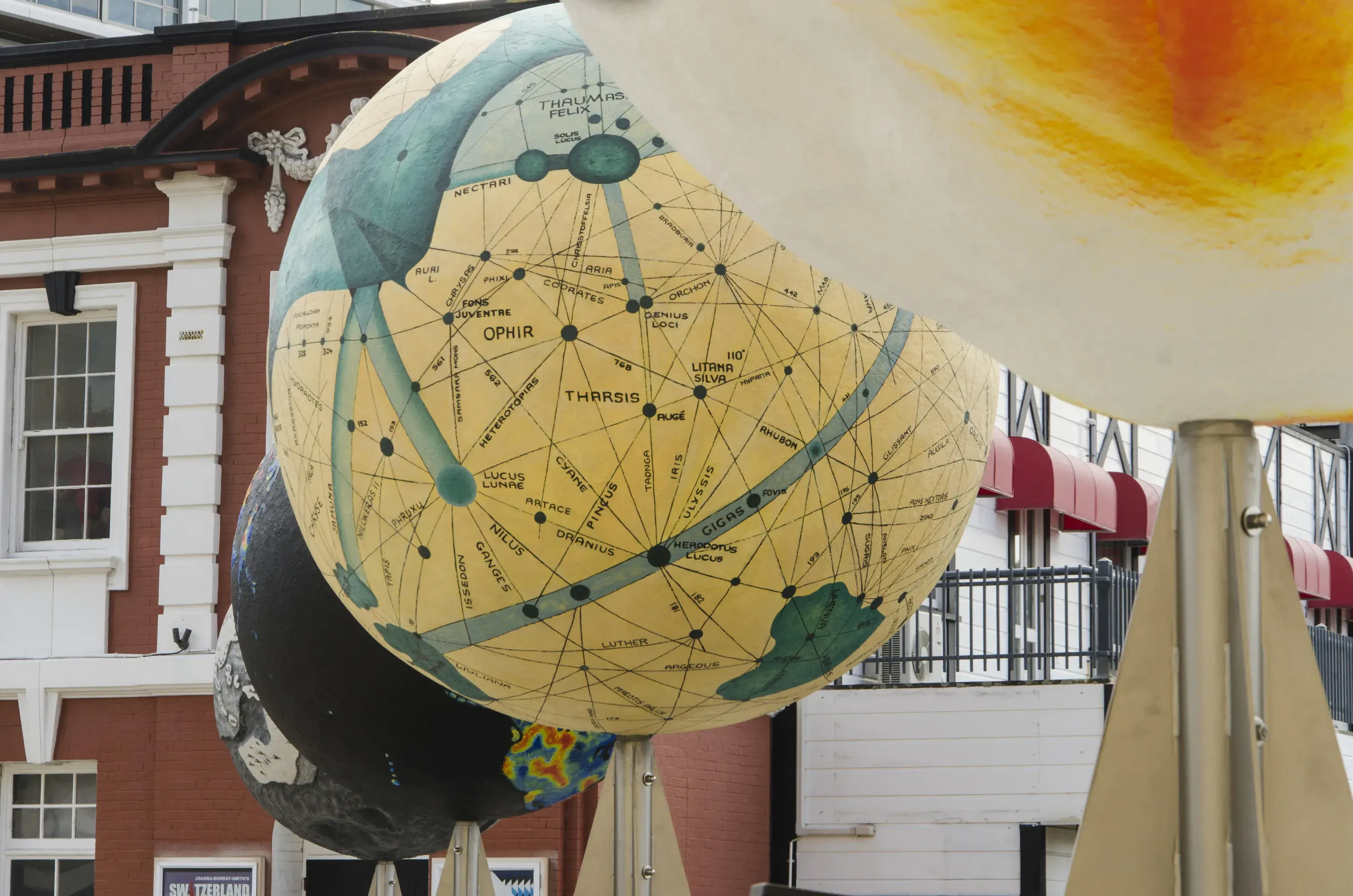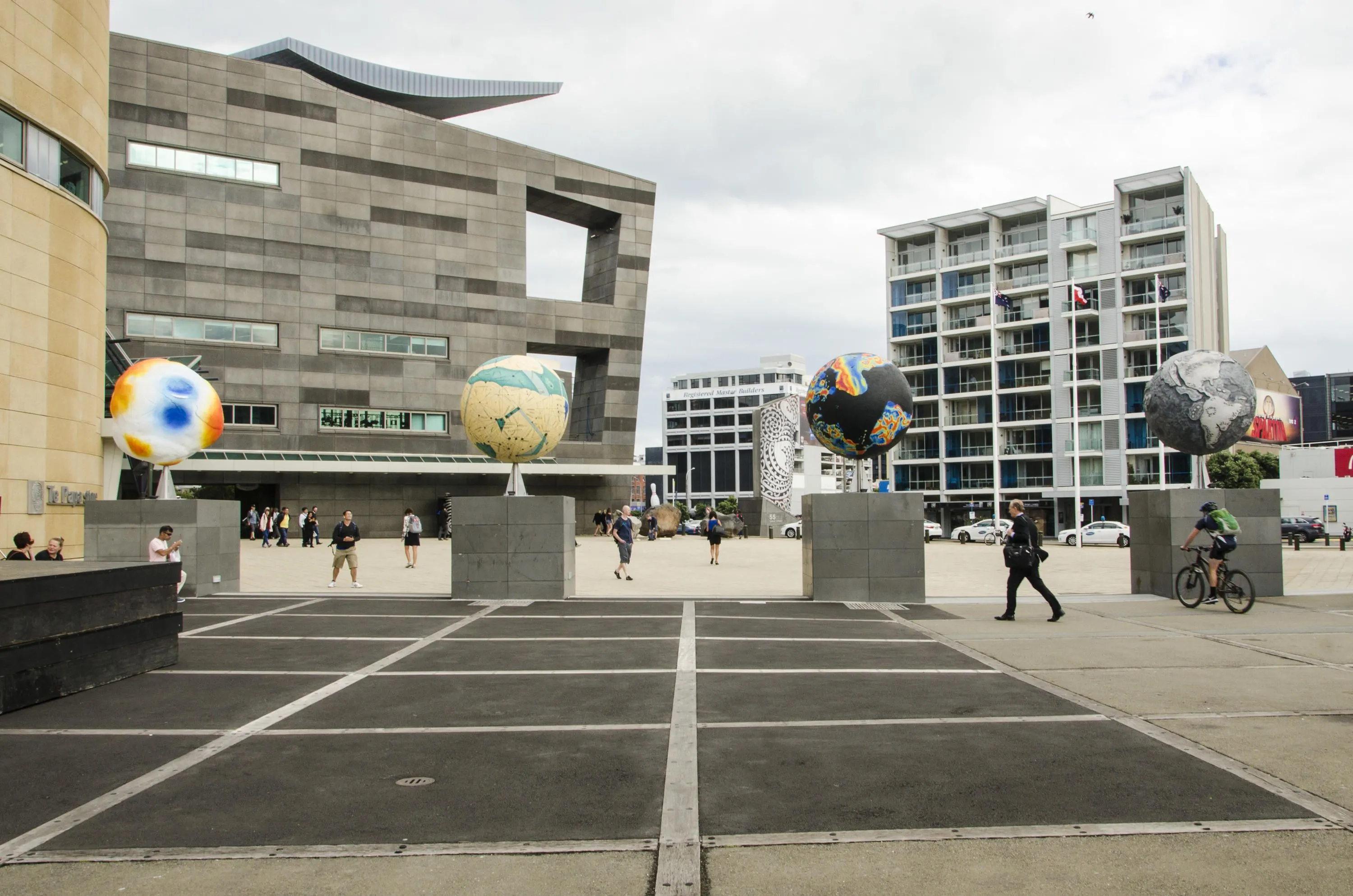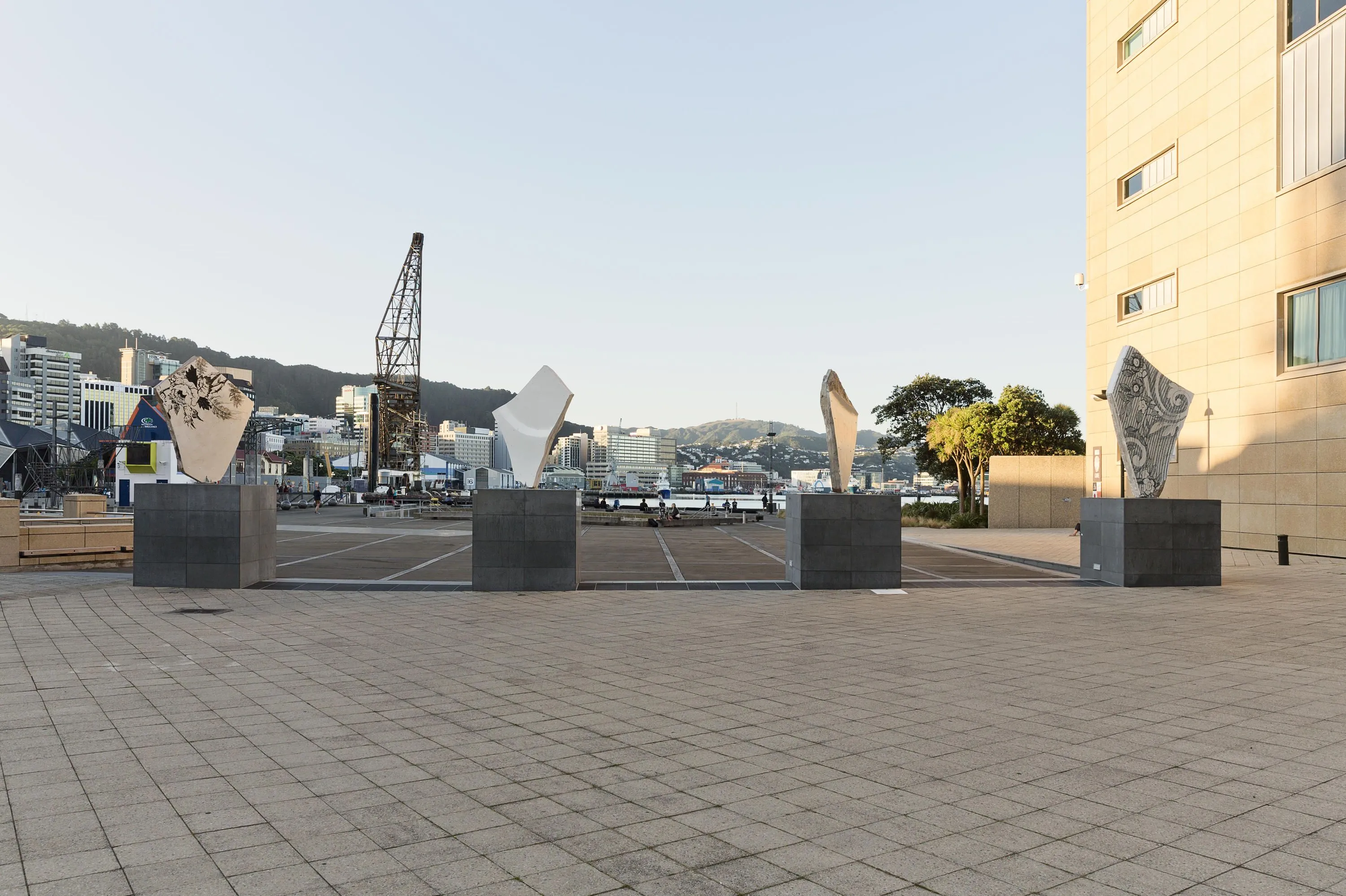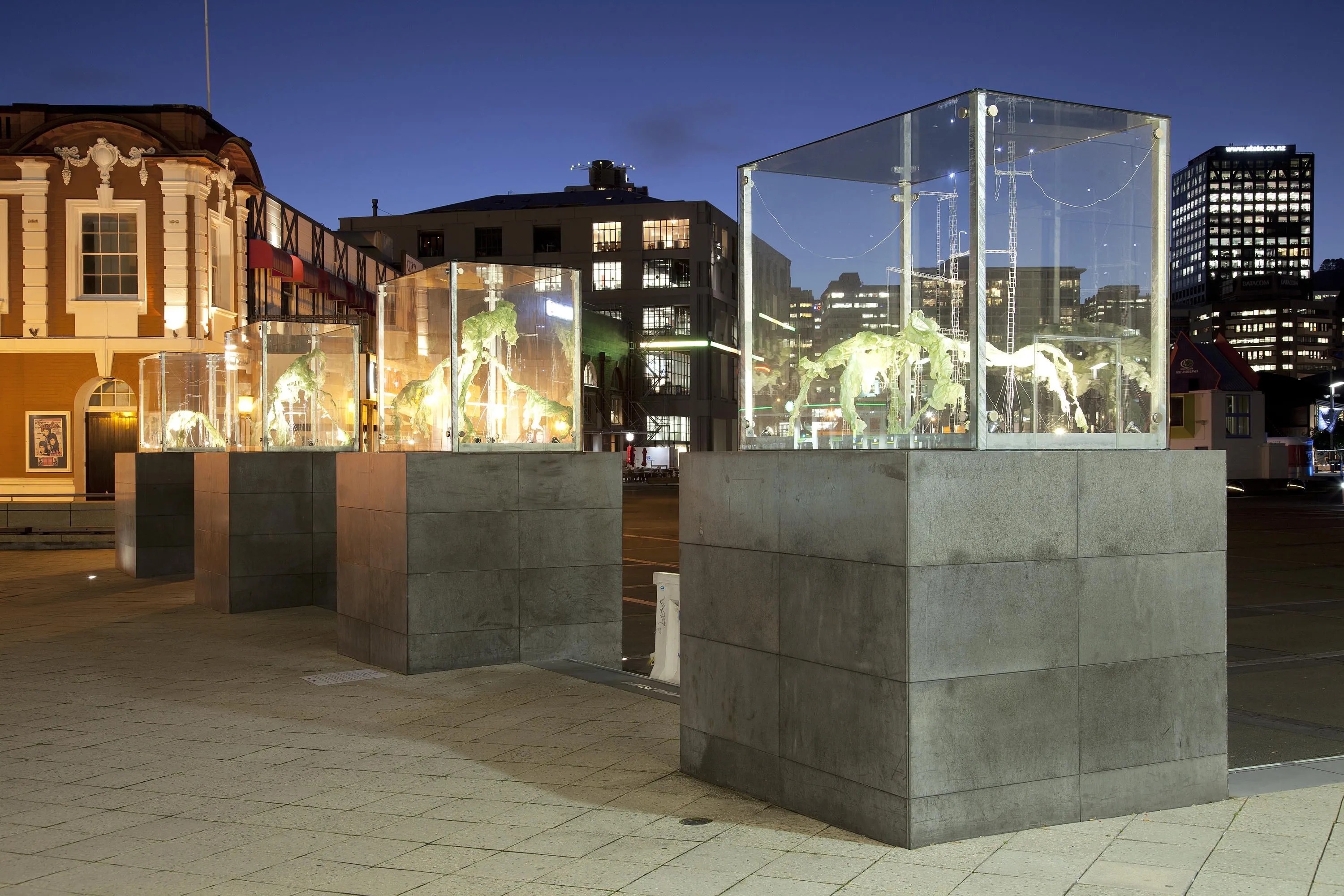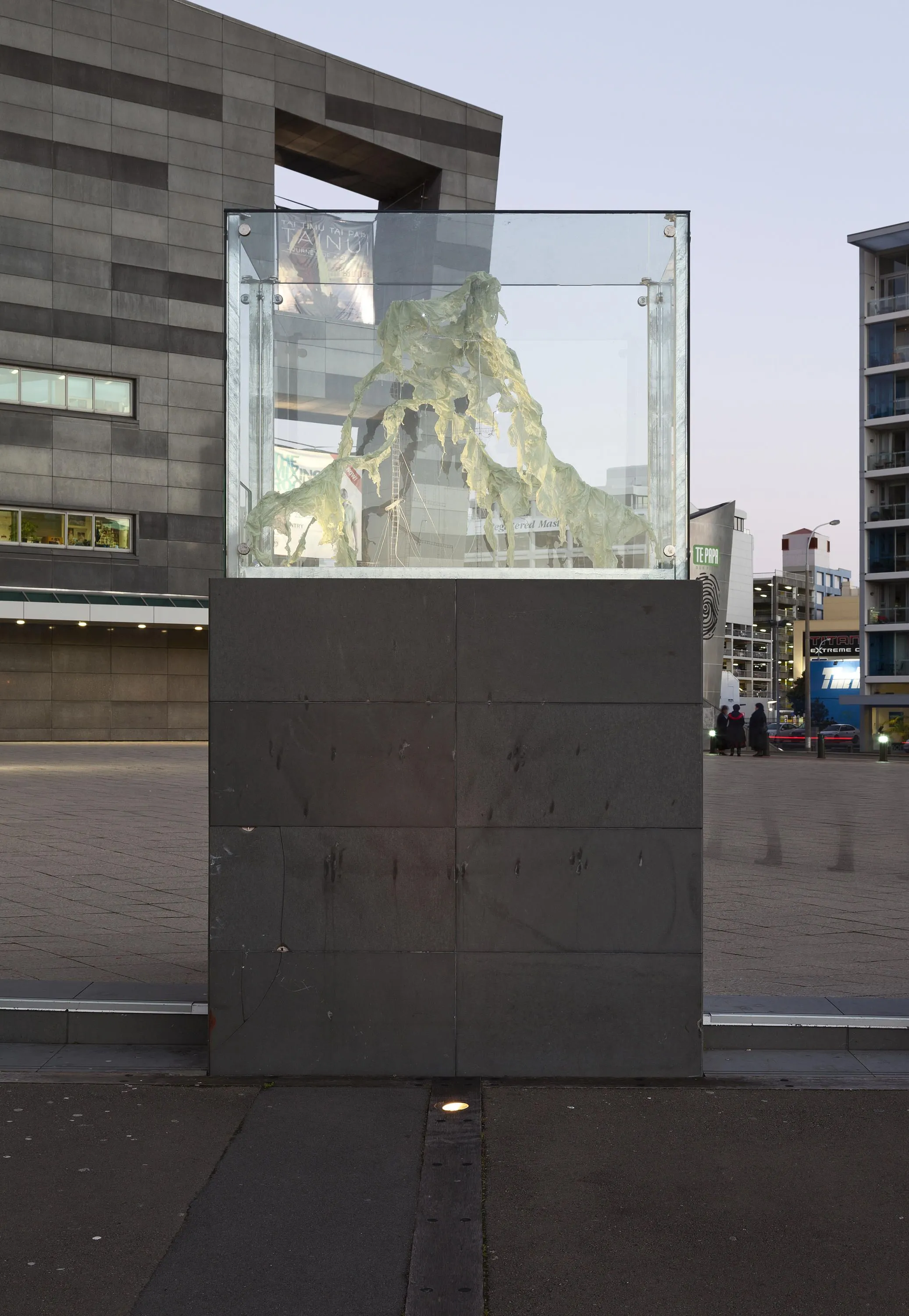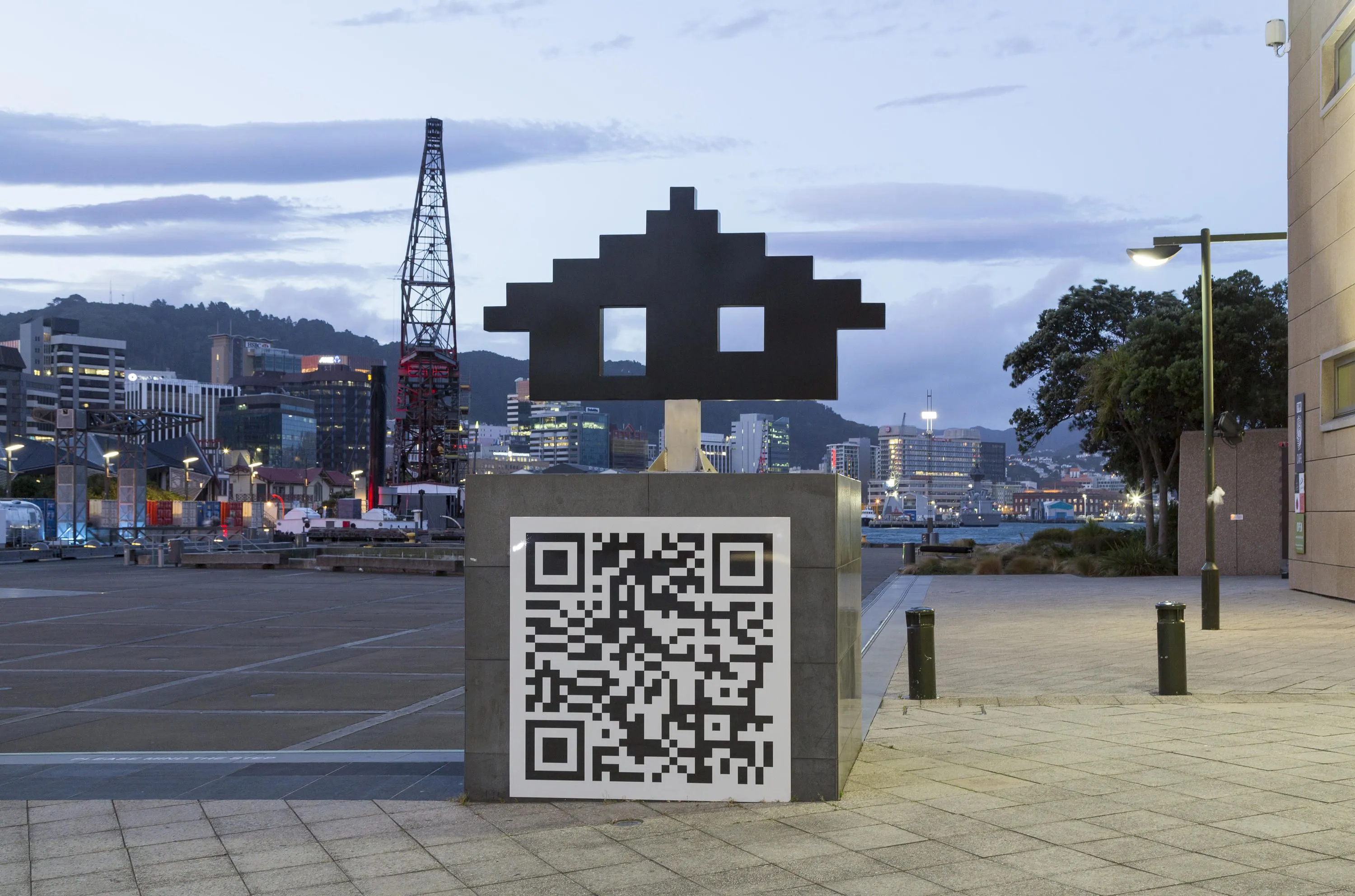Working on the Boundary
Written by
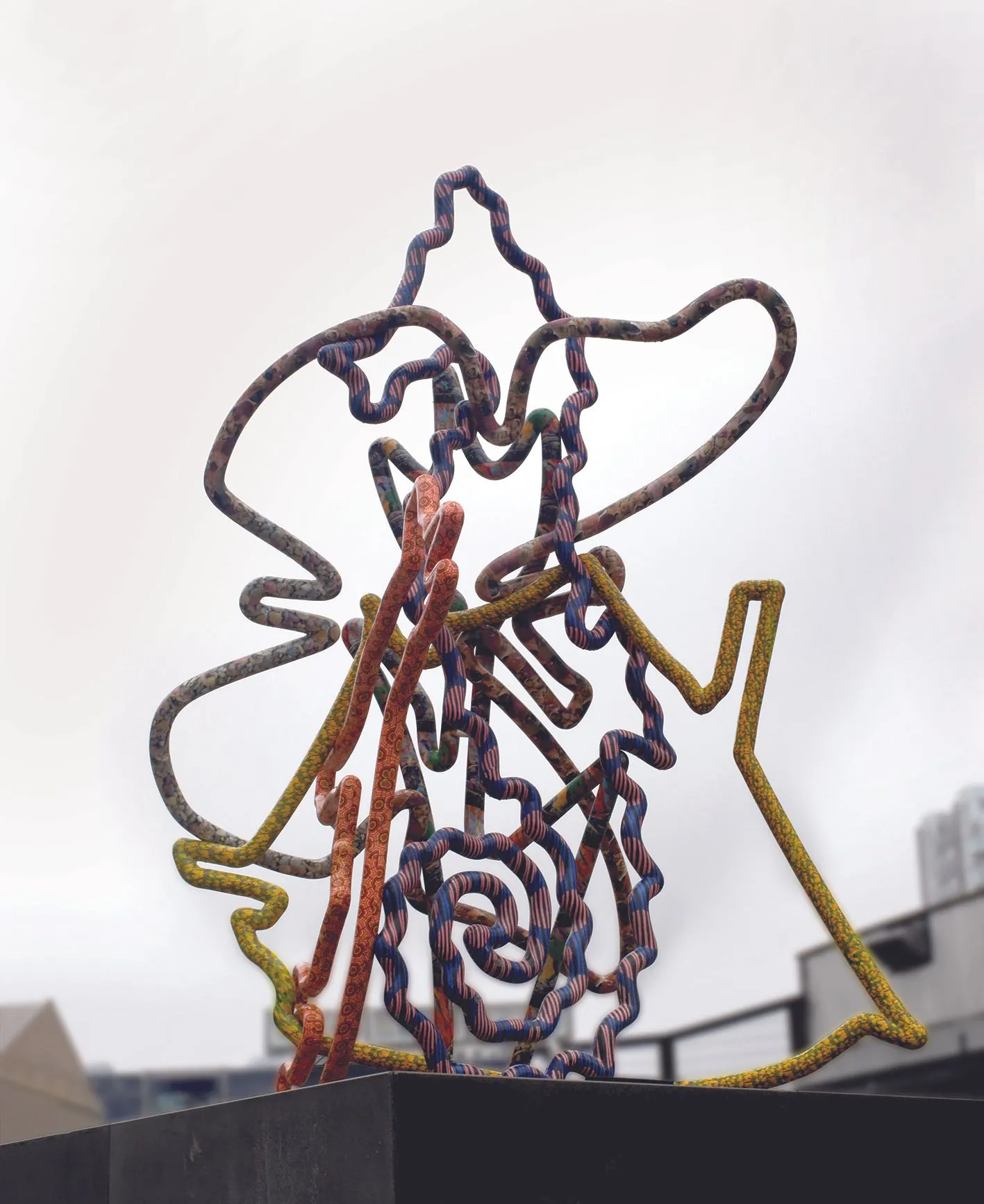
Are you ready to break out of your comfort zone?
One of Australasia’s leading temporary sculpture competitions is open for proposals for both emerging and established artists.
The 4 Plinths Sculpture Award has become a leading light of creativity in Wellington, a biennial opportunity to occupy one of the Capital’s most visible spaces, with the deadline for proposals set for 31 July.
Wellington Sculpture Trust Chair Sue Elliott sees this as the perfect platform for an artist to “take the leap into creating a large-scale public work of art. Aside from one, all of the sculptors who have worked on the plinths have taken such a leap. They’ve worked inside gallery spaces or they’ve made much smaller works.”
Turning Ordinary into Extraordinary
The plinths in question are nothing special on their own. Four large cubes of concrete originally built to stop traffic entering Taranaki Wharf on Wellington’s Waterfront. The closest connection these bollards had to art was their proximity to Te Papa’s forecourt.
But all that changed 12 years ago, when Regan Gentry’s work Green Islands was the first to realise the Wellington Sculpture Trust’s vision and transform these previously forgettable features into a beacon of artistic endeavour.
Inspired by the Fourth Plinth concept in London’s Trafalgar Square (but instead of one, we get four), it’s become a permanent home for temporary - and contemporary - works of art.
“We see those plinths as being a great showcase for New Zealand sculptors but also for the public to engage in sculpture in all its variety,” Elliott says. “Every two years something new goes up there for the public to interact with. It’s a learning process for everyone, the public and the sculptors who undertake the project.”
Rigorous Assignment
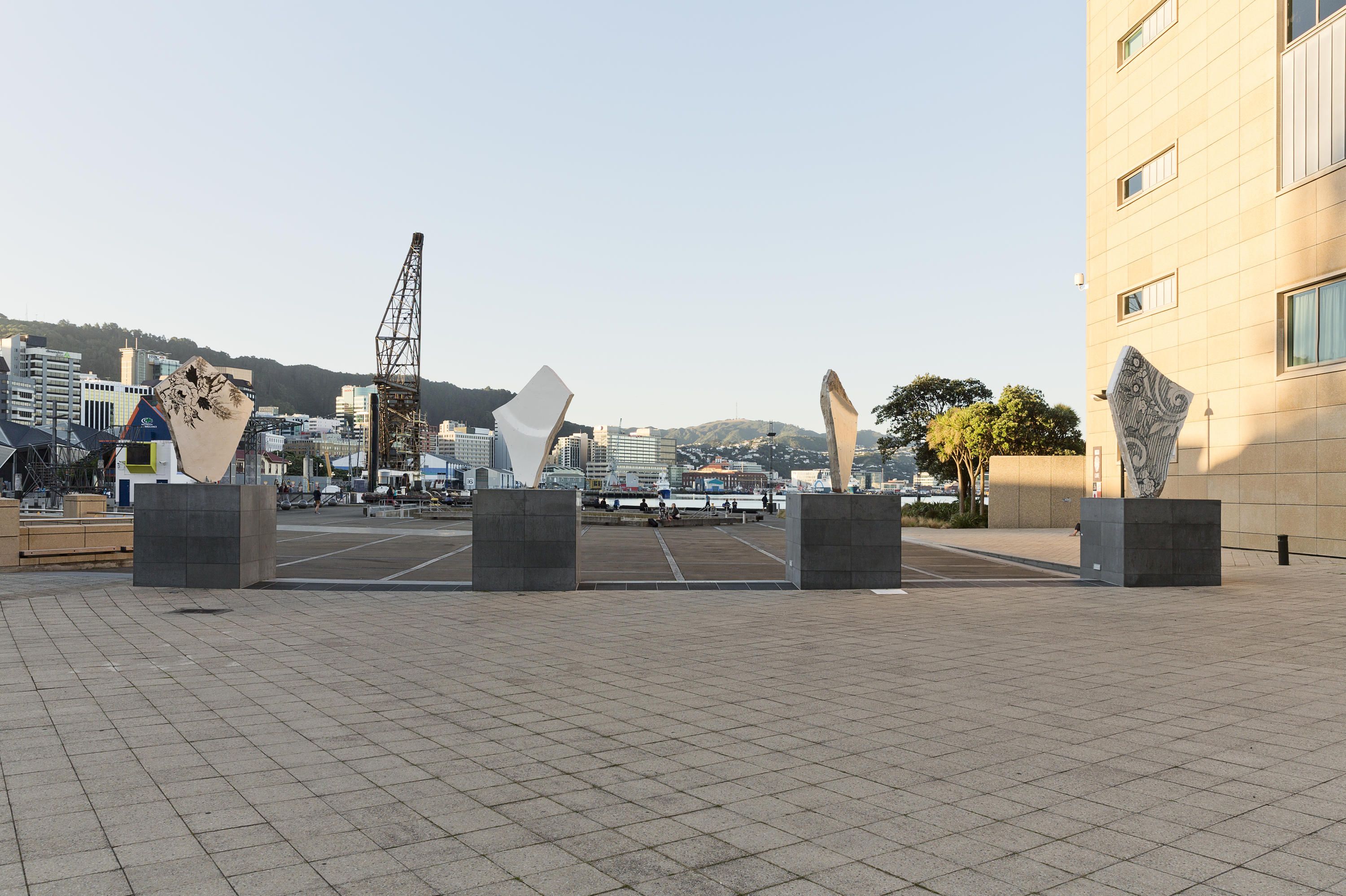
Rita Angus used to grow her own vegetables (2014–2016), Glen Hayward.
It’s an ambitious assignment that requires both rigour and creativity. What’s arguably most intriguing is that rather than just court those who are used to working on a large scale, the Wellington Sculpture Trust actively encourages emerging artists who have limited experience in the medium to accept the challenge. “Temporary works provide an opportunity for artists to work at scale and in public spaces – an opportunity seldom offered to those with limited experience when permanent works are being commissioned,” Elliott said.
Without a doubt, the finalists for the commissions to date have all had a serious arts practice of some form under their belt.
It may be an open process but it’s not one for the faint of heart. It is no easy task to create something that can survive in Wellington’s notoriously intense conditions, where it’s not uncommon for winds reaching up to 100km/hr, and a need for the work to last for anywhere between nine months and two years.
But as Elliott explains, “it’s not only a robustness in the work, we’re looking for a robustness in the thinking and the context of the work. It’s quite a rigorous selection process. We’re also looking for people who we are convinced can deliver their proposal. That tends to be experienced artists but possibly not in the space of sculpture or public art.”
Leap of Faith
That’s becoming a common trait in the successful artists to date. Elliott indicates they also tend to have something else in common.
“All the previous award winners have been incredibly humble. They have taken on the challenge to expand their practice and take a creative leap.”
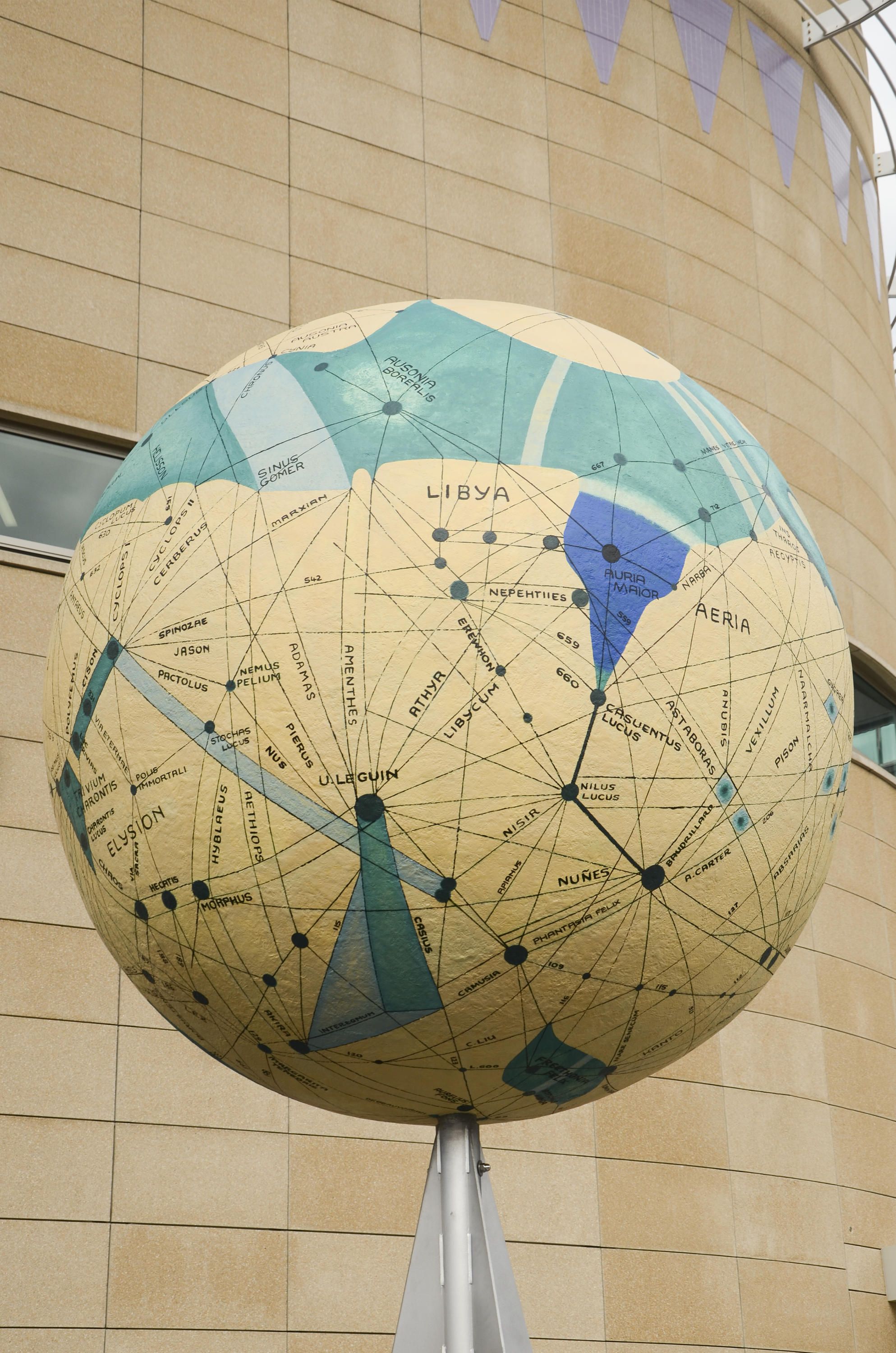
Other Worlds (2018–2020), Ruth Watson.
One such artist is Ruth Watson, whose work Other Worlds was erected on the plinths in 2018.
“I’d done commissioned work in public spaces before but they’d all been interior and wall-based. Although I’d made sculptures and installations, they’d always been in a gallery context,” Watson says.
“I was quite intrigued at moving into that outdoor commissioned space where, given my background as more of a 2D gallery artist, I may not get a look in otherwise.”
Much of Watson’s previous work had a grounding in maps and cartography, occasionally veering into the use of globes. That experience provided her lightbulb moment.
“It wasn’t a career strategy (moving into outdoors), it was more that I saw the call for proposals and saw a photograph of the existing work on the plinths. I could see globes on it instantaneously.”
Jumping in the deep end could be a tricky prospect but Watson has nothing but praise for the support she received from the Wellington Sculpture Trust, who help take care of the red tape and put the sculptors in touch with the right people to make the structure sound.
“Building consent, that’s a barrel of laughs if it's your first time doing it. (Wellington Sculpture Trust’s team) can see the big picture which is so helpful. People who you can talk to about the project freely, I found them great to work with.”
Audience of Millions
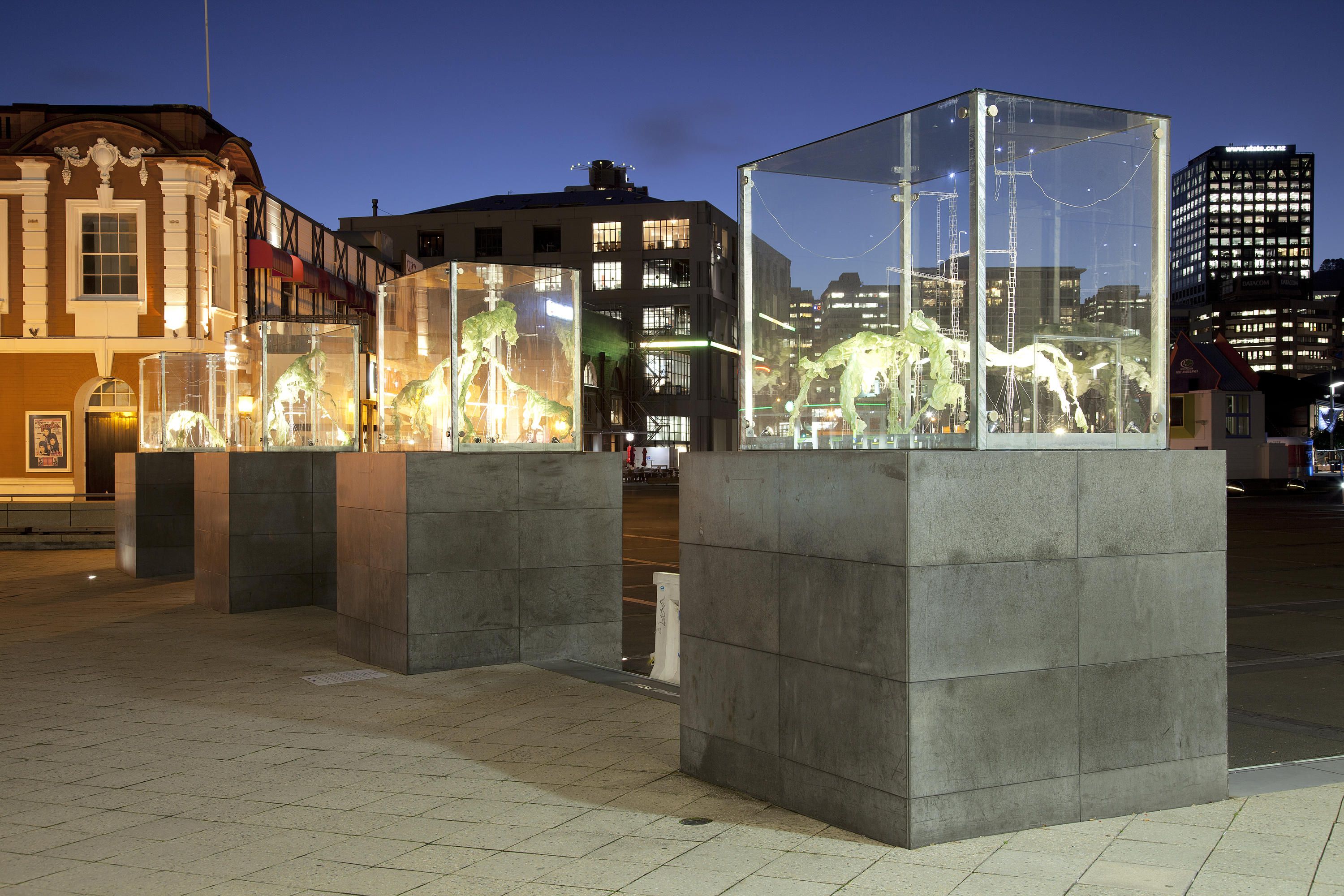
Out of the Dusk (2012–2014), Joanna Langford.
One thing is for sure, your hard work doesn’t go unnoticed. With over 1.5 million pouring out of Te Papa alone every year, not to mention the 300,000 expected in the Capital for the 2022 International Arts Festival and the waterfront foot traffic, it’s no exaggeration to say millions of people will see the successful work.
It certainly appealed to Watson. “One of the attractions about putting in a proposal for outdoor sculpture is it’s not hidden away inside a gallery, it’s out in public, in front of a whole lot of people who can critique it while you're standing there.
“I don’t make art just for the art world. You want people to see your work. On installation day, I had a crane ready to hoist the items onto the plinths and people started taking photos as they were coming off the truck, asking questions, the feedback was so direct. It was phenomenal to have that direct connection with your audience. It was everything I’d hoped it to be.”
Elliott has a vivid memory of such interaction from the first installation of Gentry’s work back in 1998, which was made up of number eight wire. “When he was down there installing them, this guy came out of Te Papa, crossing the forecourt and shaking his head.
“He was a farmer, he said ‘I have worked with number eight fencing wire all my life and I can’t believe what you’ve created with it’. They had a long chat about how Regan used four kilometres of it and how he hand moulded the lot. That farmer wouldn’t expect to come across a work like that in that space - it touches huge numbers of people.”
Finding the Next Sculptor
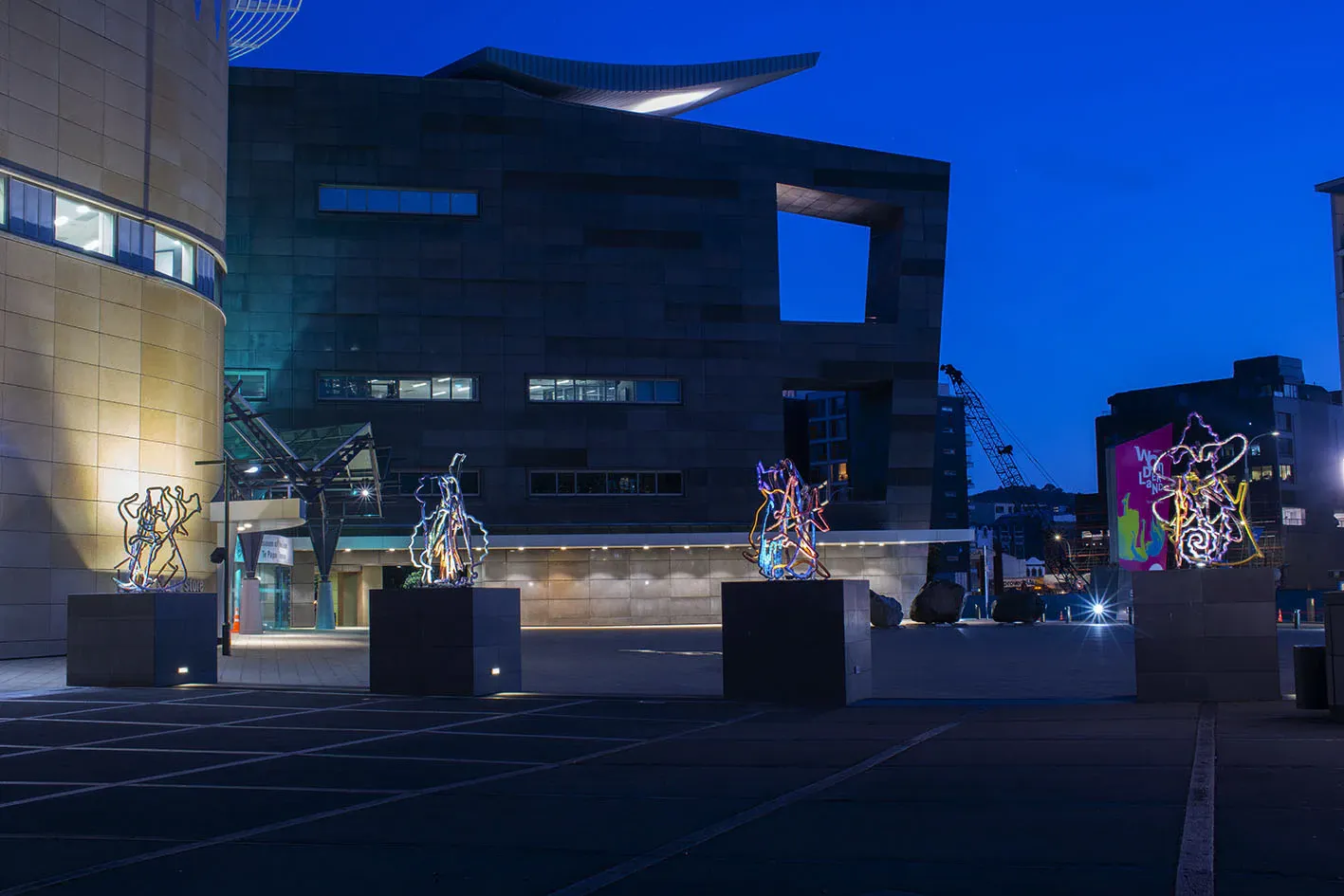
Signal Forest (2020–2022), Yolunda Hickman.
Yolunda Hickman’s Signal Forest currently holds pride of place on the plinths, with the search for the eighth winner set to start fabrication in 2021 and taking its spot on the site in 2022.
Elliott has loved the variety the four plinths have produced. Over the years, the sculptures have been constructed using everything from plastic bags to rubber, stainless steel, plywood, macrocarpa to vinyl.
“Because it’s temporary, it doesn’t have to last forever. If someone came and did something using earth and grass, we’re up for that, it can be more ephemeral than the work we have had to date.
“The brief is that they’re to create a sculpture for the four plinths. They could use just one or all four. That’s the site, whether they build a bridge between them, cover them, that’s entirely up to the artist.”
To add to the attraction, the award has been upped from $40,000 to $50,000 to help cover the not insignificant costs of creating these unique works of art.
But Elliott points out, the rewards are far more than financial.
“Yolunda Hickman’s work which is there now has inspired her to think about her practice in a whole new way. She’s now developing work that expands on the ideas and forms she created in that sculpture.”
Watson says, “I guess now I might be in the position to apply for projects that otherwise I wouldn’t be eligible for because I wouldn’t have that track record. It's fueled my imagination, that’s for sure.”
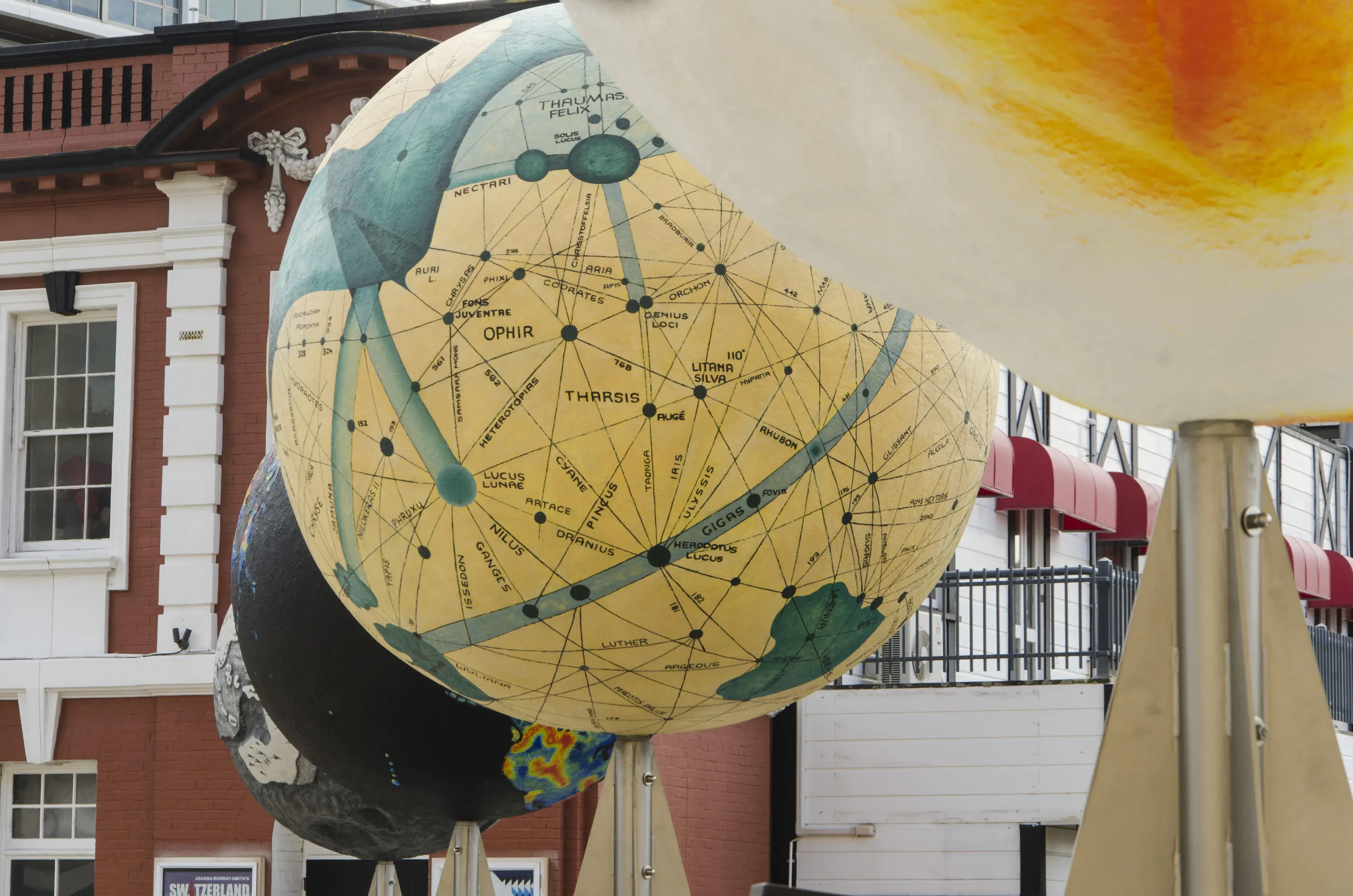
Other Worlds (2018–2020), Ruth Watson.
Watson has some last words of encouragement for those thinking about submitting a proposal.
“The process is good because it encourages you to dream and think speculatively at the outset, then you test your idea against an engineer's reality, it’s a good way to work.
“You don’t need all the answers until you’re shortlisted. Dream and think big.”
Written in partnership with Wellington Sculpture Trust. Proposals for the 4 Plinths Sculpture Award are open until 31 July. For the brief and to apply, click here.

